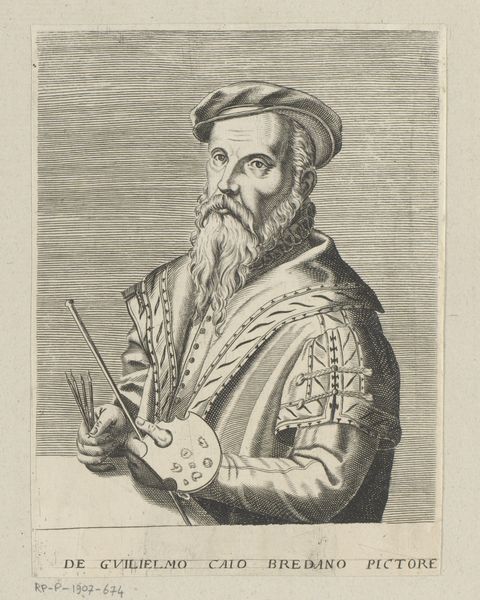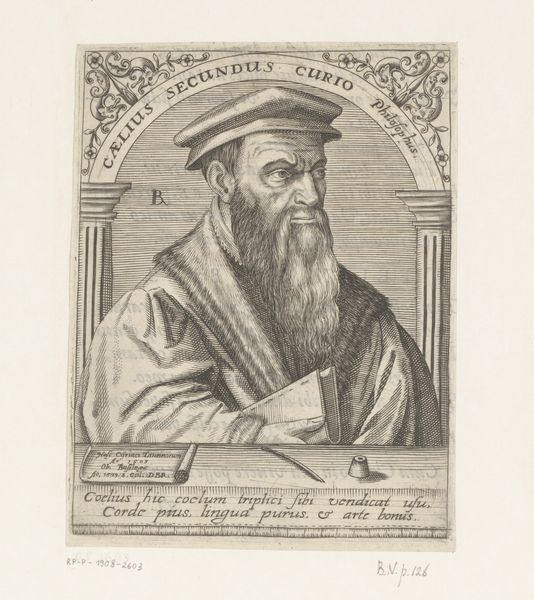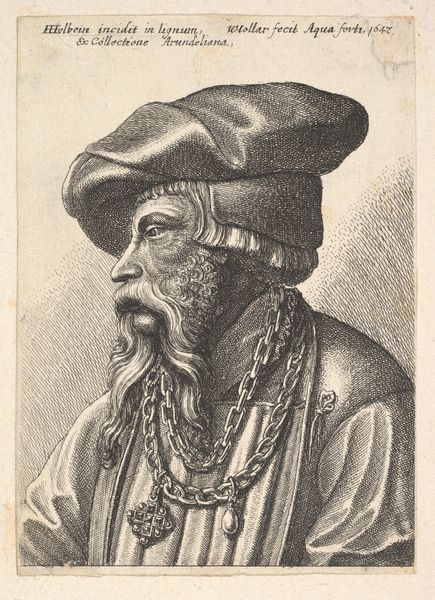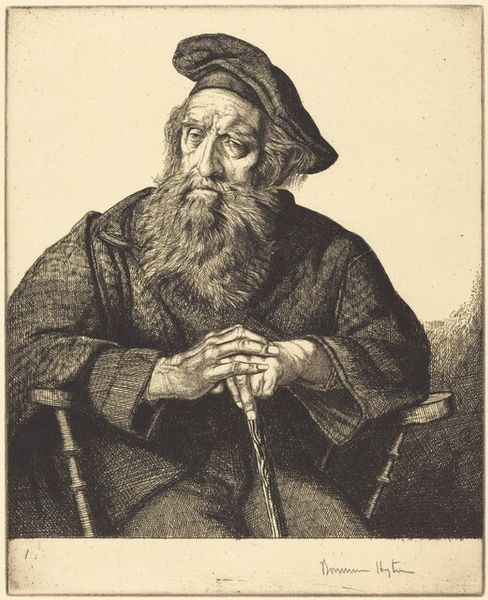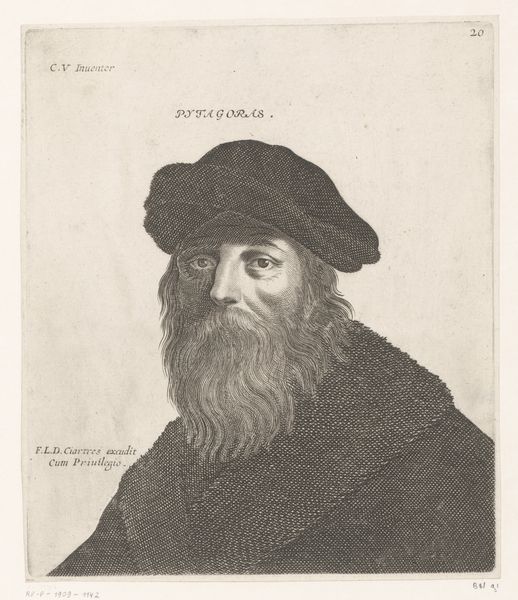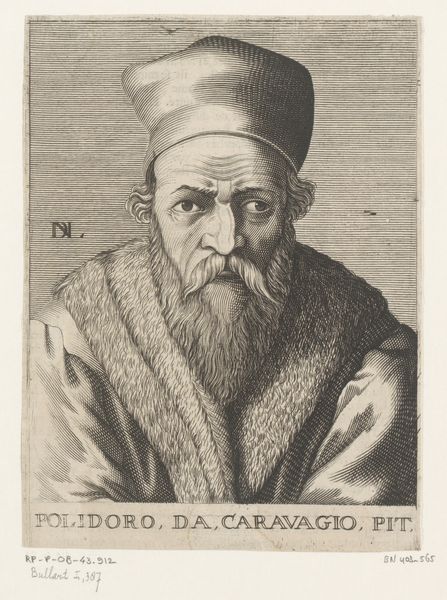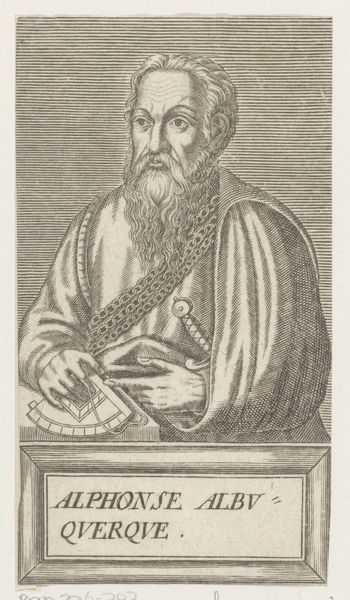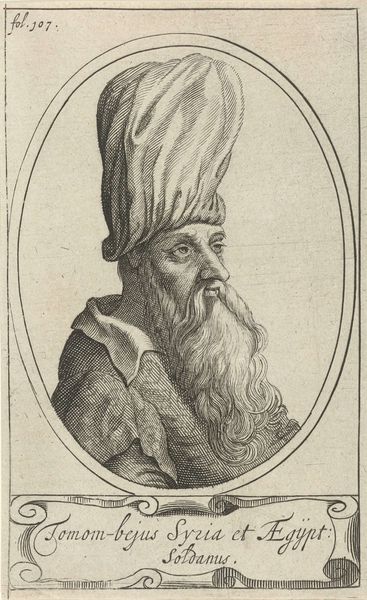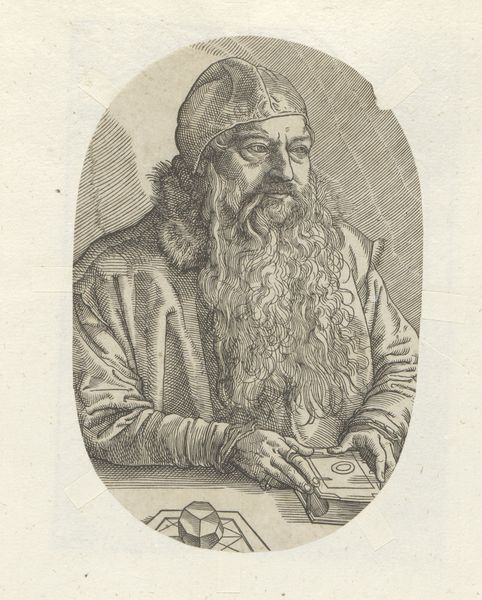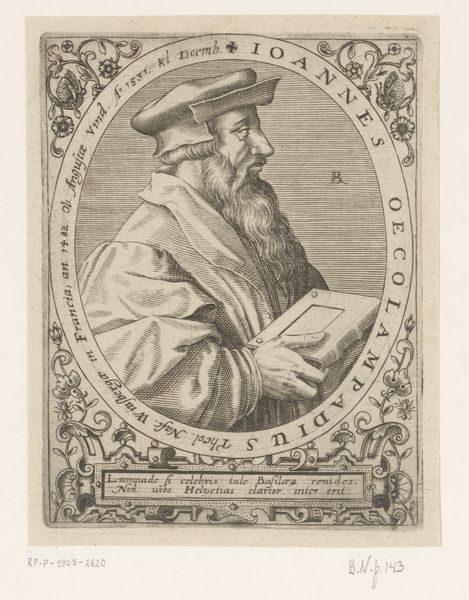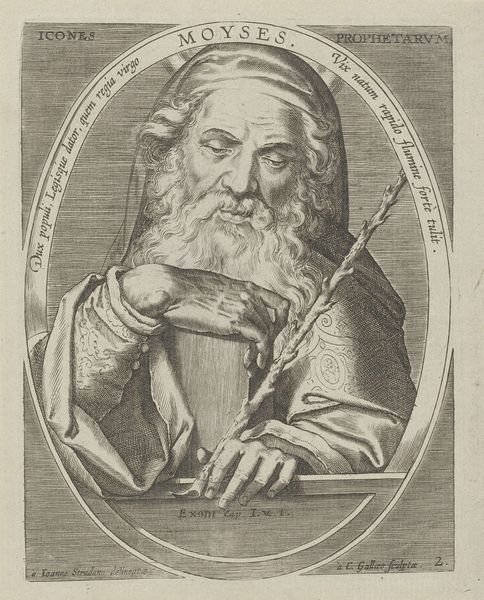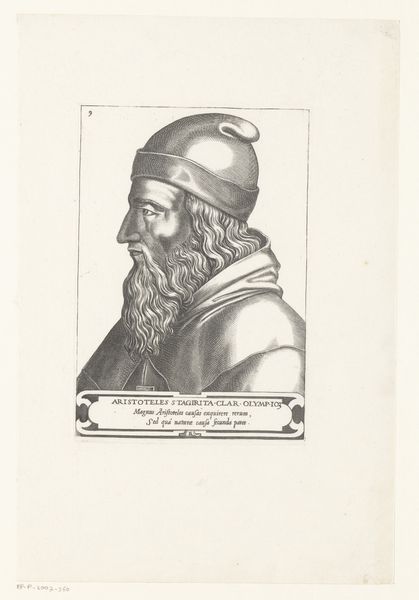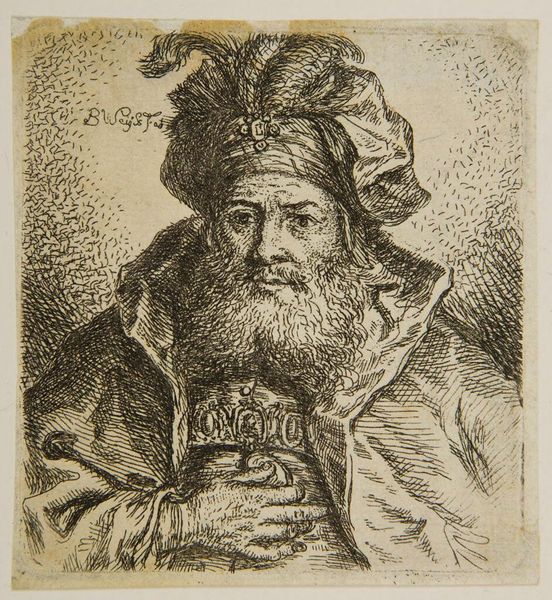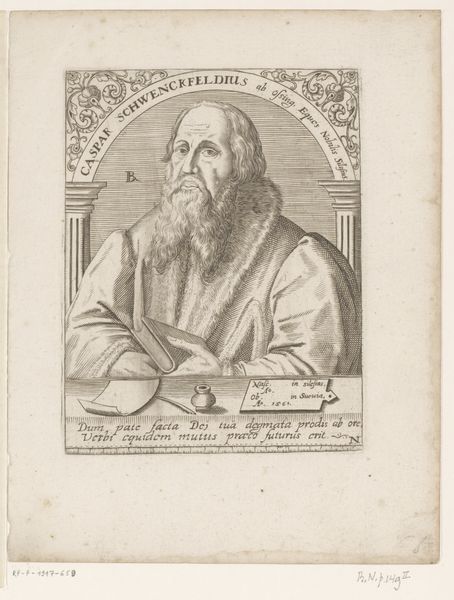
engraving
#
portrait
#
baroque
#
pencil drawing
#
history-painting
#
engraving
Dimensions: height 226 mm, width 190 mm
Copyright: Rijks Museum: Open Domain
Editor: This is "Portret van Archimedes", or Portrait of Archimedes, an engraving made sometime between 1615 and 1647, currently housed in the Rijksmuseum. It’s… detailed. All those fine lines creating texture and shadow… It makes me wonder, what do you see in this portrait? Curator: Immediately, I'm drawn to the engraving technique itself. Think about the labor involved. Each line, each dot meticulously carved into the plate. It transforms a piece of metal into a matrix for reproduction. Who was the engraver? What were their social circumstances? And how did the material process of engraving shape the image we see of Archimedes? Editor: The inscription at the top suggests its maker, “F.L.D.Ciartres”. How does this production method relate to the image's reception in that time? Curator: Consider that engravings like this were often commissioned to disseminate knowledge and promote specific figures, so thinking about that historical moment, in this image, Archimedes transitions from a classical figure to a reproducible commodity, a 'brand', in modern terms. It also opens interesting questions about hierarchies. Editor: Hierarchies? Curator: Yes. Does the laborious handwork of the engraver receive the same recognition as the intellectual genius of Archimedes? Who benefits most from this exchange of labor and knowledge? Editor: That's an interesting take! I never considered the labor aspect so explicitly, focusing more on Archimedes as a historical figure. I am curious now to find out who Ciartres was and his other clients... Curator: Indeed. Examining the conditions of artistic production—the materials, the labor, the networks—offers a powerful lens for understanding art’s role in shaping our perception of the world.
Comments
No comments
Be the first to comment and join the conversation on the ultimate creative platform.
